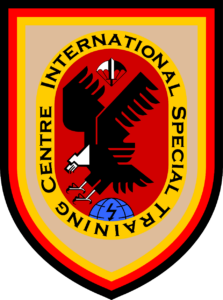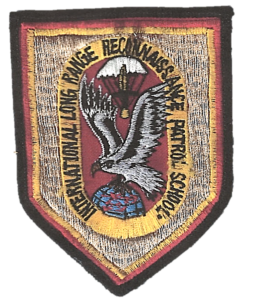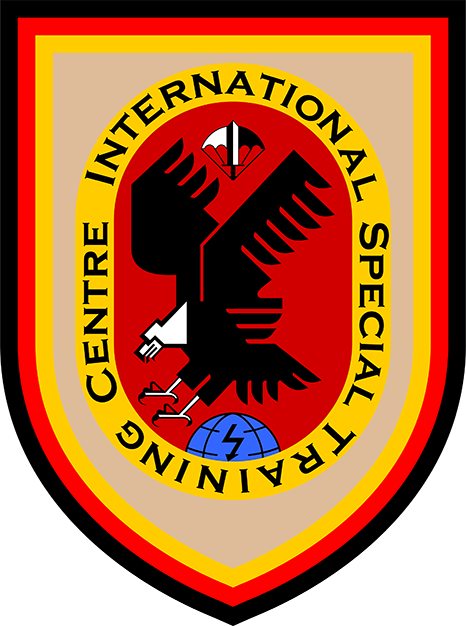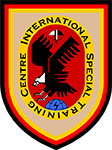The ISTC Insignia
 As is the case with most military organizations, unit insignias are tied to components of the unit’s past or to elements represented in the unit’s lineage, with slight changes reflected over time. ISTC is no different in this respect.
As is the case with most military organizations, unit insignias are tied to components of the unit’s past or to elements represented in the unit’s lineage, with slight changes reflected over time. ISTC is no different in this respect.
An early version of the design (figure 1) was briefly used (and then abandoned for unknown reasons) that used a full white parachute, three lightning bolts held in the talons, and a less blocky gray colored eagle (more closely related in style to the Fernspähkompanie 200 eagle).

In terms of design lineage, the ISTC insignia was heavily influenced by the unit insignia of Fernspähkompanie 200.
For ISTC, the current design tenants of the unit’s insignia dates to about 1985 or earlier.
The current ISTC unit insignia reflects five important aspects of the unit’s foundational international history (among other points). These five key points are related to the first three ILRRPS member nations—Germany, the United Kingdom (UK), and Belgium—and the international nature of the organization.
- the outer ring of Black/Red/Yellow represents Germany as the host nation
- the Tan (Beige) field represents the beret color of the UK Special Air Service (SAS)
- the Golden Yellow ring underneath the ISTC lettering represents the branch color of the German Fernspäher Troops (color adopted in April 1977)
- the Maroon field in the center, behind the eagle, represents the maroon beret of the Belgian Para-Commandos.
- the blue globe represents the international nature of ISTC.

